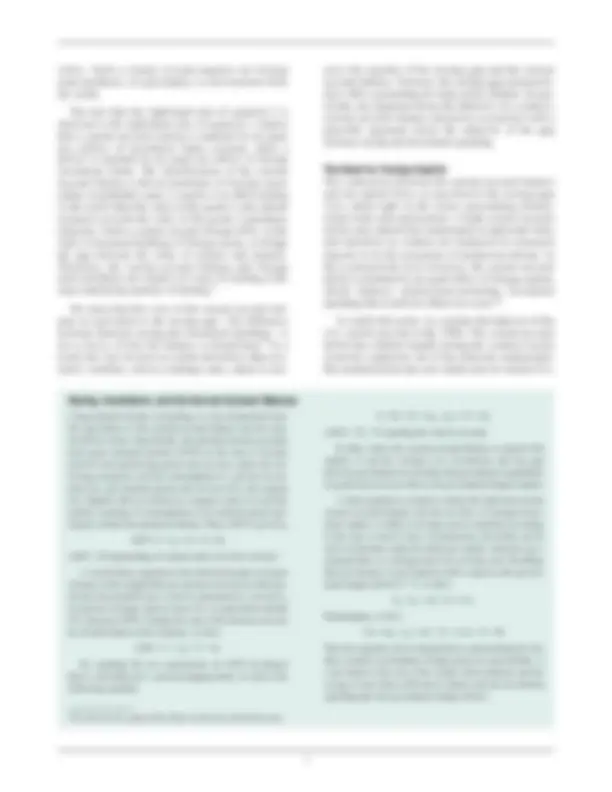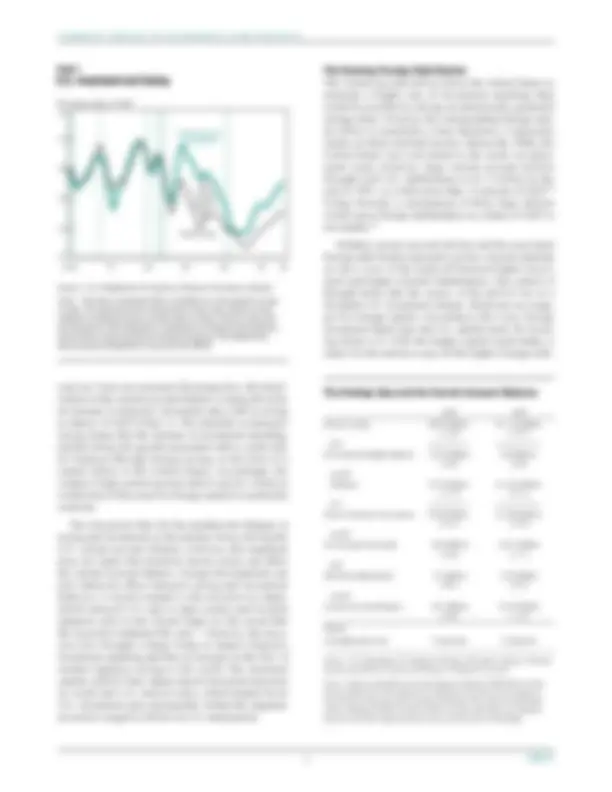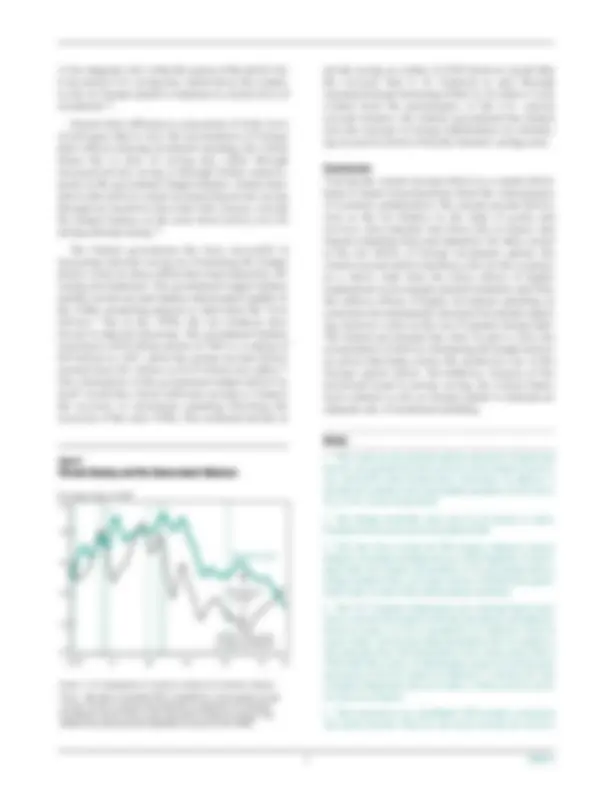





Study with the several resources on Docsity

Earn points by helping other students or get them with a premium plan


Prepare for your exams
Study with the several resources on Docsity

Earn points to download
Earn points by helping other students or get them with a premium plan
Community
Ask the community for help and clear up your study doubts
Discover the best universities in your country according to Docsity users
Free resources
Download our free guides on studying techniques, anxiety management strategies, and thesis advice from Docsity tutors
The relationship between the U.S. current account deficit and foreign investment, focusing on the employment effects. how the deficit allows for foreign capital to flow into the U.S., supporting domestic investment and economic growth, despite potential job losses due to increased competition from imports. The document also addresses concerns about U.S. firms shifting production overseas and the net job loss due to the merchandise trade deficit.
What you will learn
Typology: Summaries
1 / 6

This page cannot be seen from the preview
Don't miss anything!




F E D E R A L R E S E R V E B A N K O F N E W Y O R K
December 1998 Volume 4 Number 13
In this edition of Current Issues , we argue that the U.S. current account deficit is not a threat to employment for the economy as a whole. When viewed narrowly as the gap between exports and imports, the current account deficit translates into lower employment in export- and import-competing industries. However, when seen from an economywide perspective, the deficit represents an inflow of employment-generating foreign investment capital to the United States. Given the low level of domestic private saving in recent years, U.S. economic growth would likely be choked off by higher interest rates and reduced investment spending if the nation had no access to this capital.
How International Capital Flows Affect U.S. Employment The debate over the North American Free Trade Agreement (NAFTA) highlighted worries that eco- nomic globalization could lower domestic employment. A particular concern was that the lower trade barriers mandated by NAFTA and other trade agreements would make it easier for U.S. firms to shut down domestic plants and move operations abroad. The goods pro- duced abroad would then be sold in foreign markets or shipped back to the United States, with both actions tending to boost the U.S. current account deficit and reduce U.S. employment. While the NAFTA debate has receded from the headlines, the possibility that an employer will relocate overseas remains a legitimate worry for many U.S. workers.
The 1998 jump in the U.S. current account deficit—the broadest measure of the trade deficit—to nearly $225 billion is prompting concerns that American jobs are in jeopardy. 1 Increasing competition in the domestic market from low-cost Asian imports could put pressure on U.S. firms to lay off workers. Exporters whose sales decline as the strong dollar raises the price of their goods in foreign markets could also move to restrict employment. Finally, jobs in export-oriented firms have been hurt by the recession in Asia, which has weakened demand for U.S. goods.
Adding to concerns about the employment effects of the current account deficit is the fear that increasing numbers of U.S. firms will shut down domestic opera- tions and shift production to other countries, largely to take advantage of lower labor costs. In fact, some observers worry that the dollar’s recent strength against Asian currencies may induce U.S. firms to buy Asian manufacturing plants at fire-sale prices, leaving fewer jobs for U.S. workers.
Nevertheless, while export and import trends support concerns about U.S. job losses, employment statistics do not bear out the relationship between a rising current account deficit and lower employment. During the 1990s, the unemployment rate has declined steadily, reaching a twenty-five-year low this year, while the cur- rent account deficit has mounted. Are the concerns over U.S. job losses from international trade misplaced?
Foreign direct investment (FDI) data appear to sup- port this concern. FDI is a broad measure that captures U.S. ownership of foreign business enterprises. 2 At the end of 1997, U.S. foreign direct investment assets had jumped to $1,794 billion (valued at the current market price), up from $732 billion in 1990. U.S. holdings in the developing world—whose low-cost producers have been the focus of much of the job-loss fears— accounted for roughly 40 percent of this total. In 1997 alone, investment funds flowing out of the United States reached $122 billion, an amount equal to more than 14 percent of investment spending by U.S. firms.
The sheer size of foreign operations of U.S. multi- national corporations also contributes to concern over foreign direct investment. In 1996, nonbank, majority- owned U.S. affiliates employed 6 million people abroad, with less than half working in the developing world. The value-added output from these operations totaled $498 billion, $125 billion of which was generated in the developing world. These figures suggest that U.S. multinationals today produce more than $500 billion in goods and services abroad, rather than manufacturing them in the United States.
In assessing the impact of international capital flows on U.S. employment, however, one must consider the offsetting role played by foreign investment in the United States. As of 1996, nonbank U.S. affiliates of foreign firms employed 5 million workers here, and production totaled $340 billion. By the end of 1997, total foreign direct investment assets in the United States stood at $1,621 billion, with the United Kingdom emerging as the largest source of these funds, followed by Canada and Japan. In 1997, the flow of FDI funds into the United States totaled $93 billion. After sub- tracting this total from the $122 billion flowing out of the United States, one finds that the 1997 net outflow of FDI funds, although the largest on record, amounted to only $29 billion, or 3.3 percent of domestic business investment spending.
Other types of capital outflow from the United States are also offset by funds entering the country. Capital leaves the country in the form of portfolio investment— the purchase of foreign government or corporate bonds, or of an equity stake of less than 10 percent in a foreign business—and banking transactions. Bringing together foreign direct investment, portfolio investment, and bank- ing and miscellaneous transactions, we find that U.S. resi- dents invested a total of $478 billion abroad in 1997. At the same time, foreign residents invested some $733 bil- lion in the United States, resulting in a net investment inflow of nearly $255 billion. Thus, the U.S. economy is the net recipient of international investment capital.^3
These simple calculations suggest that concerns about the employment effects of foreign direct invest-
ment, or investment abroad more generally, may be mis- placed. Instead, concerns about the employment effects of the trade deficit might more logically focus on the imbalance in the level of imports and exports. Although U.S. sales abroad support domestic employment, U.S. imports are far higher and they displace domestic pro- duction and lower employment. 4 Indeed, one study places the net U.S. job loss due to the merchandise trade deficit at 2.4 million in 1994. 5 These seemingly conflicting findings lead us to ask an important question: What is the relationship between the large U.S. current account deficit and the nation’s status as a net recipient of employment-promoting for- eign investment capital?
Translating the Current Account Balance into Capital Flows The national income accounts, which are used to calcu- late GDP, provide a useful framework for analyzing the connection between the current account balance and net capital flows and, in turn, their relationship to domestic saving and investment. National income accounting shows that the current account balance is related to domestic saving and investment spending in the follow- ing way: (1) current account balance = domestic saving – domestic investment. The box offers a more detailed derivation of this rela- tionship. In equation 1, domestic saving is the sum of private saving and government saving. Private saving comprises both individuals’ saving and corporations’ retained earnings, while government saving refers to tax receipts less expenditure on current goods and services. 6 Domestic investment is private investment plus government infrastructure expenditure. Equation 1, in essence, defines the current account balance as the savings gap—that is, the difference between domestic saving and domestic investment spending. The national income accounts also reveal that a country’s overseas investment is related to domestic saving and investment spending as follows: (2) net foreign asset purchases = domestic saving – domestic investment. 7 Simply put, a country invests abroad when its domestic savings are more than sufficient to finance domestic investment expenditure. Such a country sends its surplus savings abroad in the form of foreign direct investment or investment in foreign stocks, bonds, or real estate. This stream of surplus savings is referred to as a capital outflow , making the country a net lender to the world. A country that does not generate savings sufficient to finance its own investment needs must attract surplus foreign savings in the form of a capital
FRBNY (^2)
C U R R E N T I S S U E S I N E C O N O M I C S A N D F I N A N C E
year low. From an economywide perspective, the deteri- oration in the current account balance is being driven by an increase in domestic investment and a fall in saving as shares of GDP (Chart 1). The shortfall in domestic saving means that the increase in investment spending, and the robust job growth associated with it, could only be financed through foreign saving, in the form of a capital inflow to the United States. Accordingly, the country’s high current account deficit can be viewed as a reflection of this need for foreign capital to sustain the economy. The discussion thus far has emphasized changes in saving and investment as the primary forces driving the U.S. current account balance. However, this argument does not imply that domestic factors alone can affect the current account balance. Foreign developments can also indirectly affect domestic saving and investment behavior. A recent example is the recession in Japan, which reduced U.S. sales to that country and boosted Japanese sales to the United States (to the extent that the recession weakened the yen). 11 However, the reces- sion also brought a sharp slump in Japan’s domestic investment spending and thus an increase in the flow of surplus Japanese savings to the world. The increased capital outflow from Japan placed downward pressure on world and U.S. interest rates, which helped boost U.S. investment and consequently limited the Japanese recession’s negative fallout on U.S. employment.
The Growing Foreign Debt Burden The current account deficit allows the United States to maintain a higher rate of investment spending than would be possible by relying on domestically generated savings alone. However, the corresponding foreign capi- tal inflow is essentially a loan; therefore, it represents claims on future national income. Before the 1980s, the United States was a net lender to the world. In subse- quent years, however, large current account deficits brought total U.S. indebtedness to $1.3 trillion by the end of 1997, or a little more than 12 percent of GDP. 12 Going forward, a continuation of these large deficits would cause foreign indebtedness as a share of GDP to rise rapidly.^13
Whether current account deficits and the associated foreign debt burden represent a policy concern depends on one’s view of the trade-off between higher invest- ment and higher external indebtedness. One school of thought holds that the source of the deficit lies in a favorable U.S. investment climate, which acts as a mag- net for foreign capital. According to this view, foreign investment funds raise the U.S. capital stock. By boost- ing future U.S. GDP, the higher capital stock makes it easier for the nation to pay off the higher foreign debt.
4 FRBNY
C U R R E N T I S S U E S I N E C O N O M I C S A N D F I N A N C E
Chart 1 U.S. Investment and Saving
Source: U.S. Department of Commerce, Bureau of Economic Analysis. Notes: The share of nominal GDP is calculated as a four-quarter moving average. The gap between investment and saving is the current account adjusted for national income accounts data coverage. Private saving and investment have been adjusted to compensate for statistical discrepancies between the savings gap and net foreign investment. The shaded areas denote periods designated recessions by the NBER.
Percentage share of GDP
14
16
18
20
22
24
Total domestic investment
Total saving
1970 75 80 85 90 95 98
Current account balance
The Savings Gap and the Current Account Balance
1992 1997 Private saving $993 billion $1,114 billion (15.9) (13.7) plus Government budget balance -$276 billion $29 billion (-4.4) (0.4) equals Subtotal $718 billion $1,143 billion (11.5) (14.1) less Private domestic investment $768 billion $1,284 billion (12.3) (15.8) equals Net foreign investment -$50 billion -$141 billion (-0.8) (-1.7) plus Statistical adjustment -$1 billion -$14 billion (0.0) (-0.2) equals Current account balance -$51 billion -$155 billion (-0.8) (-1.9) Memo: Unemployment rate 7.4 percent 5.0 percent
Source: U.S. Department of Commerce, Bureau of Economic Analysis, National Income and Product Accounts and Balance of Payments Accounts. Notes: Figures in parentheses are percentages of nominal GDP. Private saving and investment have been adjusted to compensate for statistical discrepancies between the savings gap and net foreign investment. The statistical adjustment reflects differences in how national income accounts and balance of payments data are calculated. Figures may not sum to totals because of rounding.
A less sanguine view is that the source of the deficit lies in an anemic U.S. saving rate, which forces the country to rely on foreign capital to maintain its current level of investment. 14
Despite their differences, proponents of both views would agree that to slow the accumulation of foreign debt without reducing investment spending, the United States has to raise its saving rate, either through increased private saving or through further improve- ments in the government budget balance. Studies have shown that policies aimed at promoting private saving through tax incentives have had little success, leaving the budget balance as the most direct policy tool for raising national saving. 15
The federal government has been successful in increasing national saving by eliminating the budget deficit. However, these efforts have been blurred by off- setting developments. The government budget balance and the current account balance deteriorated together in the 1980s, prompting analysts to label them the “twin deficits.” But in the 1990s, the two balances have moved in opposite directions. The government balance went from a $276 billion deficit in 1992 to a surplus of $29 billion in 1997, while the current account deficit swelled from $51 billion to $155 billion (see table). 16 The elimination of the government budget deficit by itself would have freed sufficient savings to finance the recovery in investment spending following the recession of the early 1990s. The continued decline in
private saving as a share of GDP, however, meant that the recovery had to be financed in part through increased foreign borrowing (Chart 2). So while it is not evident from the performance of the U.S. current account balance, the federal government has helped slow the increase in foreign indebtedness by eliminat- ing its need to borrow from the domestic savings pool.
Conclusion Viewing the current account deficit as a capital inflow helps to dispel misconceptions about the consequences of economic globalization. The current account deficit, seen as the net balance in the trade of goods and services, does translate into fewer jobs in export- and import-competing firms and industries. Yet when viewed as the net inflow of foreign investment capital, the current account deficit produces jobs for the economy as a whole: both from the direct effects of higher employment in investment-oriented industries and from the indirect effects of higher investment spending on economywide employment. Increased investment spend- ing, however, comes at the cost of greater foreign debt. The federal government has done its part to slow the accumulation of debt by eliminating the budget deficit, an action that helps ensure the productive use of the foreign capital inflow. Nevertheless, because of the downward trend in private saving, the United States must continue to rely on foreign capital to maintain an adequate rate of investment spending.
Notes
5 FRBNY
Chart 2 Private Saving and the Government Balance
Source: U.S. Department of Commerce, Bureau of Economic Analysis. Notes: The share of nominal GDP is calculated as a four-quarter moving average. Private saving has been adjusted to compensate for statistical discrepancies between the savings gap and net foreign investment. The shaded areas denote periods designated recessions by the NBER.
Percentage share of GDP
Government deficit
10
12
14
16
18
20
Private saving plus government balance
Private saving
1970 75 80 85 90 95 98